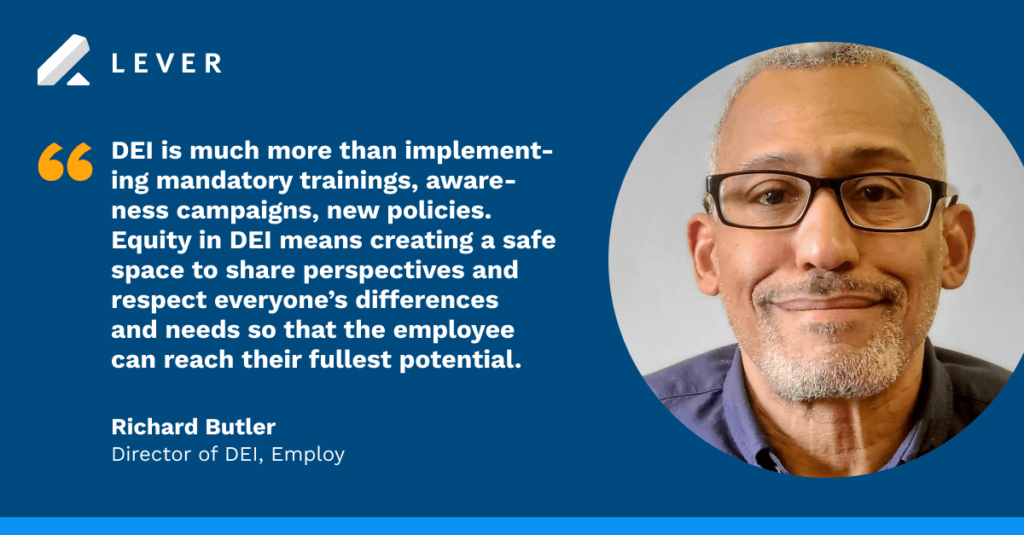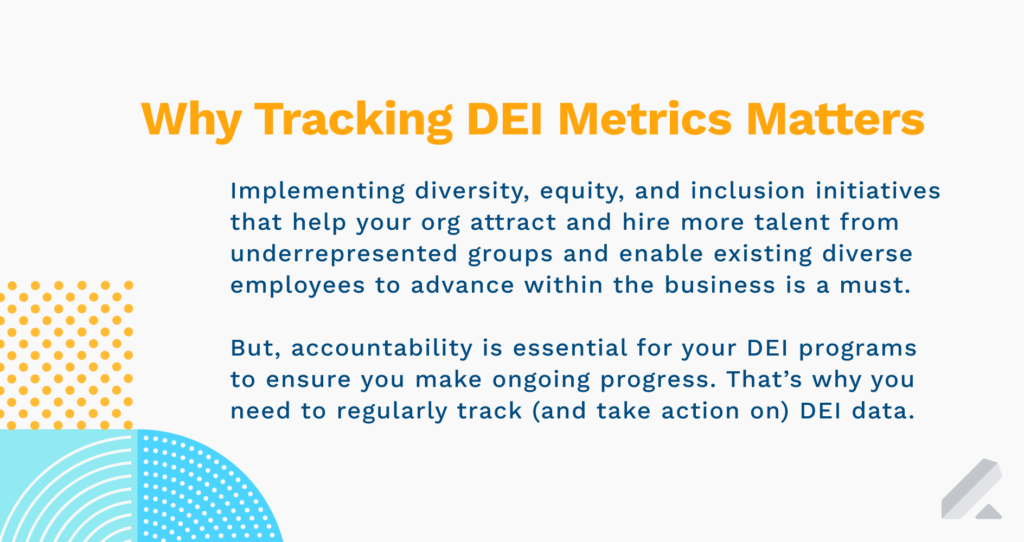Diversity, equity and inclusion (DEI) training is increasingly popular in the work environment.
Why? Simply put, because it helps foster an inclusive culture that celebrates differences and encourages employees to build relationships with colleagues from different backgrounds.
Our 2022 DEI Throughout the Employee Lifecycle report found 75% of employers mandate DEI training for newly onboarded members of their workforce.
For executives who may not be familiar with the concept, it’s worth taking the time to learn what DEI training involves, how it can help teams become more cohesive and productive, and how they can implement various types of training programs at their orgs.

What business leaders need to know about DEI training before implementing it at their orgs
In short, DEI training helps workers learn about unconscious and implicit bias, effective communication methods to employ with one’s diverse workforces, and how to create a highly inclusive workplace where everyone — regardless of race, gender, gender identity, sexual orientation, or other background/trait — is always seen and heard by their peers and leaders.
Some things that C-suite members, in particular, should know about DEI training:
- Unconscious bias is a major contributor to inequality in the workplace. DEI training can help leaders identify their own biases and take steps to mitigate them.
- Communication is key to fostering a diverse and inclusive environment. Leaders should learn about effective communication strategies that can be used with employees from different backgrounds.
- Creating an equitable workplace requires addressing systemic inequity. Your diversity and inclusion training can provide insights into how to identify and address these issues.

The importance of creating dedicated DEI training programs for all employees to partake in
There are a variety of different types of DEI training programs available, so it is critical to do your research to find one that will best meet the needs of your organization.
A few popular examples of different types of DEI programs include:
- Awareness and education programs. These can take many different forms, but they all aim to increase understanding and knowledge about DEI issues. Some common topics covered in these programs include: bias, privilege, oppression, microaggressions, intersectionality, and ally-ship, and crucial education around sexual orientation.
- Programs that focus on developing skills. These programs help employees work effectively with people from diverse, equitable and inclusive backgrounds. This is in recognition of the fact that our workforce is becoming increasingly diverse and that we need to be able to work together effectively in order to be successful.
- Organizational change programs. These seek to address the root causes of inequality and discrimination in the workplace can be very beneficial for employees. These programs can help employees learn about the different types of inequality and discrimination that exist in the workplace, and how to identify and address these issues.
When planning your DEI training program, just be sure to consider both the size of your org and the budget you have available for diversity, equity, and inclusion-centric sessions.
It’s not surprising that 88% of employers fail to effectively onboard, per Gallup. That’s likely because 58% of orgs see onboarding as purely administrative. (That is, focused more on paperwork than actually helping new employees hit the ground running from the first day.)
Your diversity training should be infused into onboarding from the moment a new hire begins. This ensures all workers who join your business get the same DEI education, so to speak.
Consider partnering with an external consultant or group that specializes in DEI training, if you don’t have the internal resources to incorporate it in your onboarding program.

3 businesses that have seen success with their respective DEI training programs
There are few better examples of businesses with premier DEI training programs (i.e., ones that enhance their company culture and employee morale) than these orgs:
- Google: Google has been an industry leader in terms of investing in DEI training and initiatives. The company offers its employees a number of resources to learn about different cultures and experiences, including an “unconscious bias” training program. According to their team, this has helped create a more inclusive environment at Google. Employees have even reported feeling more comfortable discussing race and ethnicity openly.
- Meta: Meta has also been proactive in terms of DEI training, offering workshops and educational materials to employees on topics on unconscious bias training. These efforts have helped establish a more positive and supportive culture at the company, with employees feeling more comfortable speaking up when they see something that isn’t right.
- Microsoft: As of June 2021, more than 96% of Microsoft employees have completed DEI training on allyship, covering, and privilege. The company offers a number of different courses on topics like unconscious bias and microaggressions, and provides resources for employees to continue learning after the initial training. This commitment has helped improve the culture at Microsoft, with employees feeling more comfortable expressing their diverse perspectives and backgrounds.
An increasing number of companies prioritize DEI initiatives in the workplace — and for good reason. Just know that, by making DEI progress an ongoing priority, you position your business as one that truly cares about creating a positive work environment for employees.
Something that can boost both your talent attraction and retention efforts in the long run and ensure you have a strong — even enviable — company culture other orgs want to emulate.
One facet of DEI you can improve with LeverTRM? Diversity recruiting and hiring. Schedule a call with the Lever team today to learn more about our leading ATS + CRM solution.



